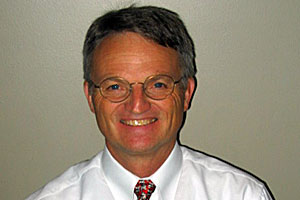The ninth annual Great Lakes Regional Dairy Conference (GLRDC) scheduled for Feb. 3-5, 2011, at the Bavarian Inn Lodge and Conference Center in Frankenmuth, Michigan, includes two days of educational sessions, one half-day of breed association and youth meetings and an industry-wide awards banquet honoring a host of industry winners including the MSU Dairy Farmer of the Year.
The GLRDC is dedicated to helping dairy producers learn new ways of increasing their profitability by doing more with less. This year, leading experts will make presentations on topics ranging from animal health and innovative uses of dairy products to milk pricing policy development and lessons learned from 2009.
To provide a preview of the educational line-up, Progressive Dairyman asked the Friday morning speakers to comment on their presentations. Here are their responses:

Milk Pricing Policy Development: Where It’s At, Where It’s Going
Jim Tillison
Senior Vice President, Marketing & Economic Research, National Milk Producers Federation
Chief Operating Officer, Cooperatives Working Together (CWT)
Why is this topic important?
It is important for dairy producers to be exposed to and understand all aspects of Foundation for the Future, a package of programs that dramatically improves dairy policy by focusing on protecting producers’ margins rather than price to better protect producer’s equity, stabilize dairy markets thus reducing volatility.
What do you hope attendees will take away from this presentation?
An understanding of Foundation for the Future and the belief that Foundation for the Future is the right direction for dairy policy and programs to move.

Bottlenecks in Reproduction
Dr. Jeffrey Stevenson
Professor of Animal Science
Kansas State University
Why is this topic important?
Everyone has only 24 hours per day. In managing reproduction, managers must learn to focus their time and attention on priority issues – issues that can be solved most easily. Not all reproductive problems can be solved, so managers must focus their efforts on those problems where they can make the biggest difference.
What do you hope attendees will take away from this presentation?
Hopefully, attendees will come away with a greater understanding of those factors affecting reproduction and where management has either high, moderate or little control. Mangers must focus their attention on solving problems for which we have the greatest control.

Dairy Forage Alternatives: Grass-Legume Mixtures in Dairy Rations
Dr. Dan Undersander
Professor of Agronomy
University of Wisconsin
Why is this topic important?
Inclusion of some grasses in the dairy ration may be an effective way to reduce ration NFC and improve herd health and milk production.
What do you hope attendees will take away from this presentation?
We hope that attendees will:
1. Appreciate the value of grasses in dairy rations.
2. Recognize the value of selecting grass varieties carefully.
3. Understand the differences in management and harvesting of grass-legume mixtures from production of pure alfalfa stands.

Preparing for the Next 2009: Learning Lessons and Moving Forward
Gary Sipiorski
Dairy Development Manager
Vita Plus Corporation
Why is this topic important?
The financial positions of dairy producers cannot withstand another 2009. Dairy producers lost between $500 to $1,500 a cow. If the normal year net income on a dairy is $300 per cow it will take at least three years of positive cash flows to get back the equity that was lost. Producers are also facing higher input cost, which translates into tighter margins. Their lenders are watching as well and have regulators to satisfy who are looking over their shoulders.
Dairy producers need to know what is happening in the U.S. and worldwide economies that affect their milk checks, this is called Macro Economics. They have to know what critical financial items to watch on their dairy in these volatile times that will drive their cash flows. In other words, “What’s in my checkbook”! This is call Micro Economics”
What do you hope attendees will take away from this presentation?
Understanding that caring for your family, cows and watching your inputs are important. However today you must know your financial position. You have to brand your balance sheet into your mind, totally know what drives your cash flow and how management decisions will affect the financial bottom line. The future belongs to the dairy producers that understand their financials and if 2009 is repeated you will be better prepared.
Registration forms to attend GLRDC are available online or by calling (517) 353-3175. Online registration closes Jan. 28, 2011. PD





